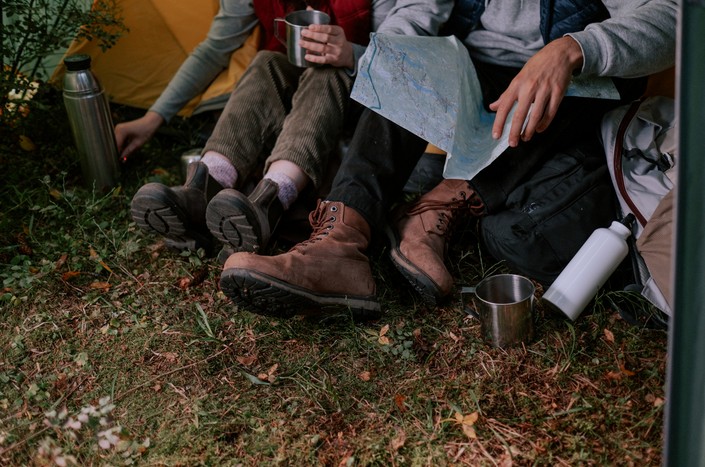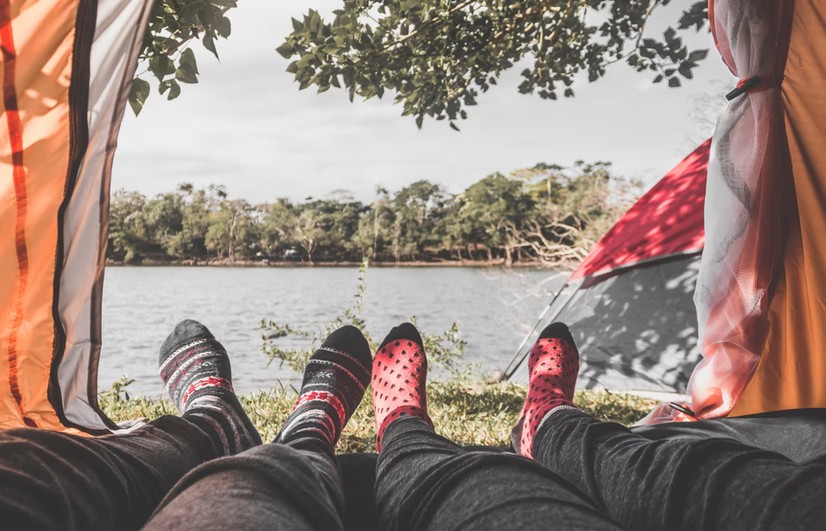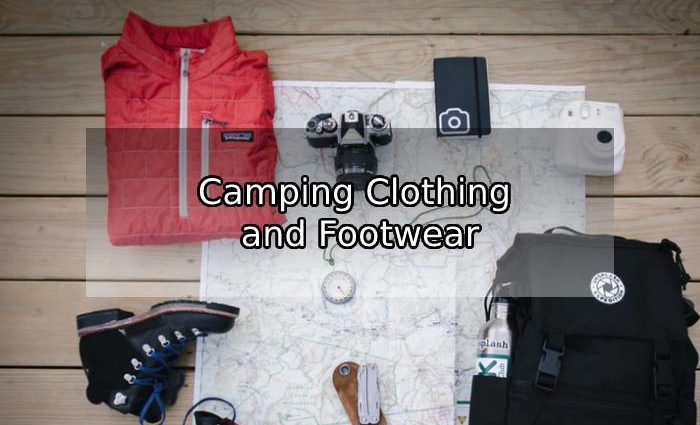Camping apparel (see camping equipment) can make or break a camping vacation, especially if the weather is really bad. Though the particular clothes to bring will vary depending on your intended activities and the weather, some general rules should be followed.
Table of Contents
Fabrics
Breathable, resilient, and quick-drying textiles are ideal for outdoor use; wearing damp cloth in cold weather is risky and can lead to hypothermia. Cotton is a terrible choice for this reason: it absorbs sweat and takes a long time to dry. Cotton in any form should be avoided, including jeans, T-shirts, and underwear or socks.
Choose synthetic textiles like polyester and polypropylene instead. GORE-TEX® is the ideal camping fabric because it is both waterproof and breathable, wicking away sweat while also keeping you dry in a heavy downpour. Fleece is a wonderful midlayer for cold conditions, while down coats and vests compress well in a pack.
Layering
Always layer your clothing. Layering not only allows you to adjust your clothing when the weather changes, but it also aids in body temperature regulation by allowing perspiration to drain more quickly. Dress in three layers of varying thicknesses:
- Inner layer: Moisture is wicked away from your skin and transferred to the next layer of clothing. Long underwear made of polyester or polypropylene is ideal for this layer.
- Middle layer: Draws perspiration from the inner layer and promotes evaporation in the middle layer. Warmth is provided by this layer, but it should also be flexible to warmer conditions. Look for garments with flaps that can be zipped or buttoned, as well as other ventilation options.
- Outer layer: Look for garments that have deep, sealable pockets and don’t have belt loops or other chafing-causing attachments.
Look for garments that have deep, sealable pockets and don’t have belt loops or other chafing-causing attachments.
Boots

Sturdy athletic shoes may be all you need for a simple hiking or camping vacation. Hiking boots, on the other hand, have advantages over all-purpose shoes. Boots boost traction and protect your feet from severe circumstances and ankle problems by being designed specifically for managing uneven terrain. Boots are classified according to their weight. Select the lightest category that best suits your requirements:
- Lightweight (less than 3 pounds): Athletic-shoe manufacturers make a lot of these boots. They’re great for low-impact camping and summer activities, but they’re not waterproof and don’t provide as much ankle support as heavier boots.
- Midweight (2.75–4 pounds): These waterproof boots, which are usually made of leather, have firmer midsoles, more cushioning, and more dynamic treads for better traction. They are, however, less flexible and must be softened and broken in before being used in the wilderness. Follow the 50-mile rule, which states that you should wear your boots for 50 miles before taking them camping.
- Heavyweight (more than 4 pounds): For dedicated mountain climbers, these tough boots are the way to go. They’re the most water-resistant of all the boots, with thick soles and plenty of ankle support. In addition, they necessitate a lengthier break-in period. The leather uppers of most boots are made up of parts that are stitched together (you can see these seams in most sneakers and other shoes). More seams allow the boot to fit more securely, but they also let water in and are frequently the first component of the boot to blow out on the trail. The heavyweight uppers are composed of one piece of leather and hence have fewer seams, making the boots more durable and waterproof.
It’s critical to thoroughly examine possible footwear before making a purchase. Here are some purchasing suggestions:
- In the late afternoon or evening, try on some boots. Because your feet swell a little at the end of the day, you’ll want to try boots on after they’ve grown to their utmost size.
- Wear the socks you’ll be using for camping and trekking. Their thickness can have an impact on the ideal boot size for you.
- Your toes should not contact the front of the boot when you stand. If that’s the case, go for a larger size.
- As you walk, your feet should remain motionless in the boots. Even if you’re walking down an incline, make sure this is the case.
Bring a change of shoes with you on your journey, in addition to your boots. When you’re relaxing at the site, you might want to change out of your boots and into something more casual.
Socks

Socks should wick away moisture and keep your feet from chafing in your boots. A thin liner is worn below a larger wool sock by many campers. (Again, cotton should be avoided since it retains moisture and takes a long time to dry.) Look for soft-fiber socks with smooth seams that are well-cushioned.
Rain Gear
Disposable rain gear, such as a plastic poncho, is inexpensive and convenient, but it won’t keep you dry in severe rain or for more than a few hours. It can also be stifling and confining.
A parka made of GORE-TEX or a comparable fabric is a significantly superior option, though it is more expensive. Choose a large size that will cover all of your other layers. A nice hood, plenty of pockets, and a mesh liner are all things to look for (which will keep you cool during summertime showers.)


Comments are closed, but trackbacks and pingbacks are open.